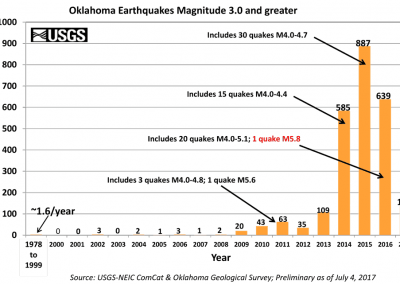PENTA NEWS
PENTA NEWS
Fracking and fluid-induced microseismicity: a toll for our energy thirst?
AXA Postdoctoral Fellowand BGSMath Faculty member Jordi Baró i Urbea is developing stochastic models that will distinguish between natural seismicity and human-induced seismicity. In this article, he explains how he hopes to detect, predict, and prevent the seismic hazard related to human activities and minimise their risks.
Industry partners are usually able to provide detailed geomechanical data of actual reservoirs and share the injection protocols used during their operations. Interdisciplinary research teams formed by geophysicists, seismologists, engineers, physicist and applied mathematicians use this data to develop and improve mathematical models of fluid-induced microseismicity based on their knowledge on fluid and wave propagation, material and fault mechanics and poromechanics.
The models are tested against the available seismic information of the area and catalogues obtained through ad-hoc seismometer and geophone arrays active during and way after the operation. The overall research effort is used to design new hazard assessment techniques and protocols for risk mitigation that are proposed to policy makers.
Part of my current research is in collaboration with several labs in the University of Calgary associated to the MIC of Canada. As I have explained, human-induced activities are indeed capable of activating tectonic faults. But statistics can give us a hand to distinguish between fluid-induced microseismicity and tectonically activated seismicity. I am now studying the statistics and spatio-temporal correlations in microseismic catalogs, and the development of a stochastic model for fluid-induced microseismicity. Our model links together different conceptual paradigms in fracture modelling, such as percolation, fluid diffusion and stick-slip mechanics (the spontaneous jerking motion that can occur while two objects are sliding over each other). Our final goal is to understand how the fundamental features in the geomechanics determine the statistical laws of the microseismic catalogs.
Our hope is that, through our joint efforts, in the future we will be able to detect, predict and prevent the seismic hazard related to human activities, minimize risks and ascert responsibilities in the eventual case of damages and losses. Thanks to our research, fluid-induced microseismicity might, one day, be excluded from the long list of unavoidable tolls and consequences of our thirst for energy and scarce resources. (Jordi Baró i Urbea)
Participants



